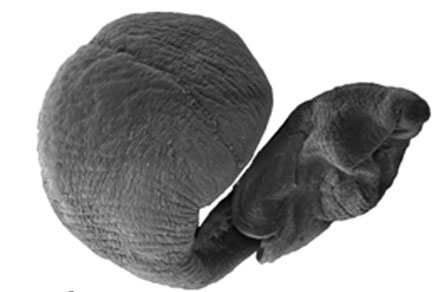Abstract
We describe the morphology of Entovalva nhatrangensis Bristow, Berland, Schander & Vo, 2010, an endosymbiontic bivalve living in the oesophagus of Holothuria spinifera and H. leucospilota in Vietnam. The delicate shells are entirely internalized. The body is very small compared to the foot, which is dorso-ventrally flattened and contains the digestive diverticula and the fertile parts of the gonads. Even though the gills are small, they probably serve in collecting suspended matter, and in addition, the species clearly feeds on benthic diatoms, which it probably sorts out from the contents of the host’s gut. The species is a protandric hermaphrodite. Most males have a total length of 1.5–3.0 mm and above that size start changing sex to become females, which may attain a total length of nearly nine mm. Sperm is transferred in spermatophores with a solid wall produced by glands within the male siphon. One to three spermatophores are placed on the gills of females and the ova become fertilized as they pass from the genital pores to the siphon, where they are brooded until released as D-larvae.

